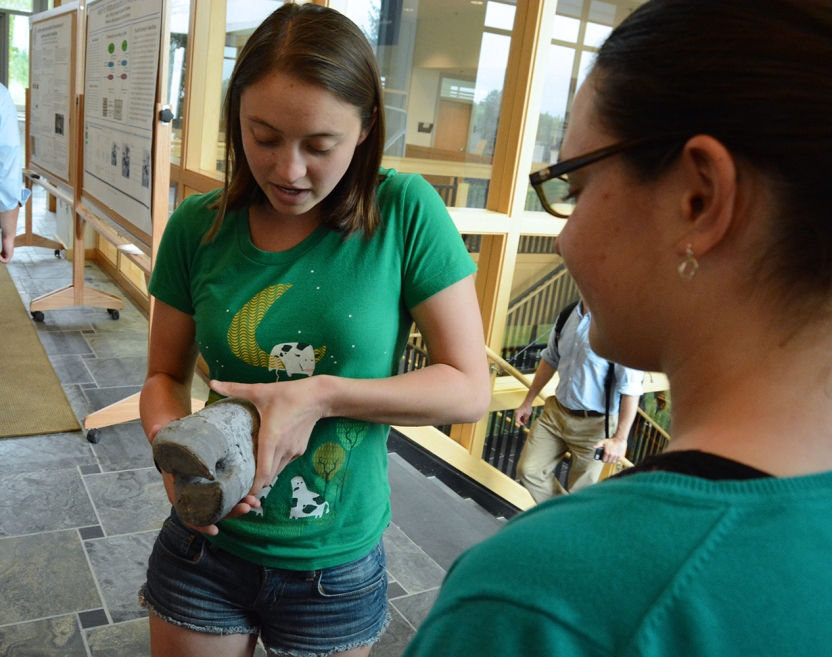Summer Research Showcased at Symposium

MIDDLEBURY, Vt. — “Happy cows give more – and better quality – milk” was the surprising opening thought from several students who presented their research at the annual Summer Symposium for undergraduate research on July 30 at Bicentennial Hall. The eight students, all part of a STEM (science, technology, engineering, math) innovation project, had developed a prototype device for early detection of hoof lesions in dairy cows.
Surrounded by Addison County dairy farms, the STEM students saw a possible application for infrared imaging to help alert farmers to the painful infection known as digital dermatitis. According to the students, the condition can often go undetected until advanced stages when treatment is difficult. The students created a device that combines an infrared camera at the end of a rod with a separate touch screen interface for the farmer to enter information about the cow. It can be used as a handheld device or mounted to a milking parlor rail to enable photography of cows entering that stall.
| Summer Symposium Slide Show |
| [view:embed_content==499177] |
Students said that farmers’ initial reactions have been very positive. This fall they are planning to do further testing with local dairy farms to collect data and assess the usefulness of the device. Middlebury’s STEM innovation projects draw together students from multiple science and math disciplines to “solve a real-world problem through interdisciplinary technological innovation.” Guiding the process is a team of faculty advisors that includes professors Jeremy Ward (biology), Noah Graham (physics), and Frank Swenton (mathematics).
The STEM team was among the 134 students who participated in undergraduate research projects across a wide range of sciences, arts, and humanities disciplines this summer. Most of the student researchers received stipends to work with faculty mentors. Typically students worked 37 hours per week over the eight-week summer research session. Their work culminated in an exhibit of 44 posters in the Tormondsen Great Hall.
For more information about undergraduate research opportunities at Middlebury, visit the undergraduate research office web site.
– With reporting by Stephen Diehl and photos by Robert Keren

